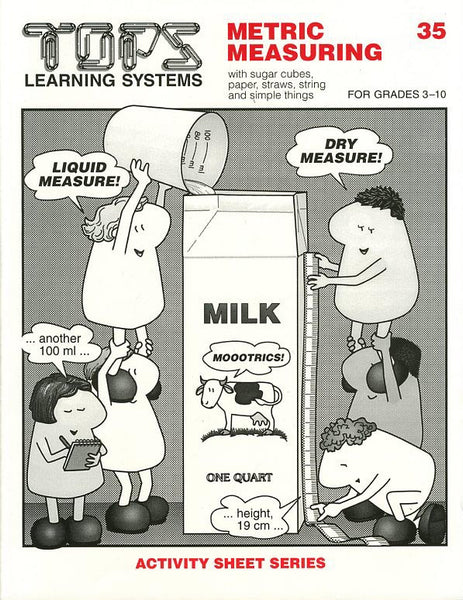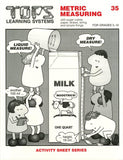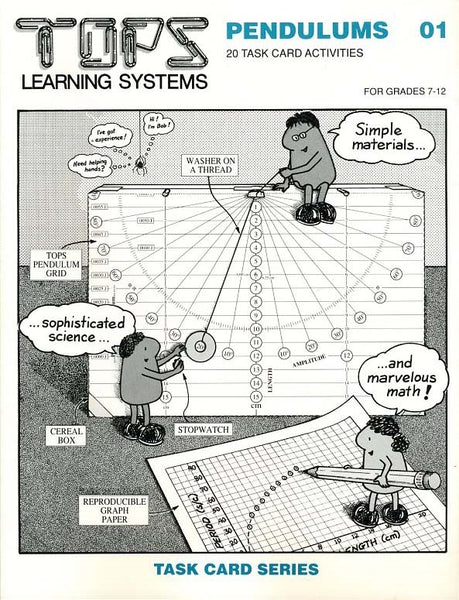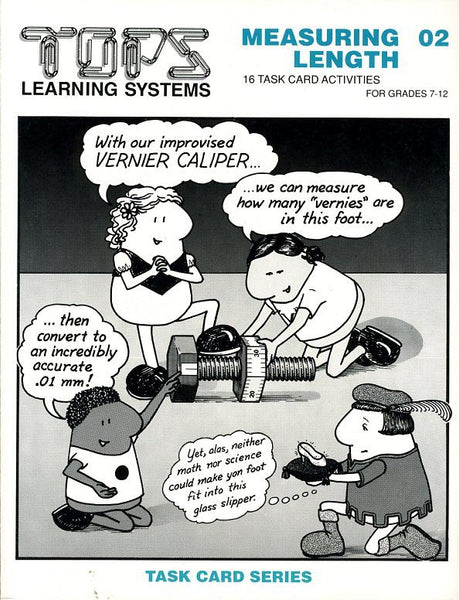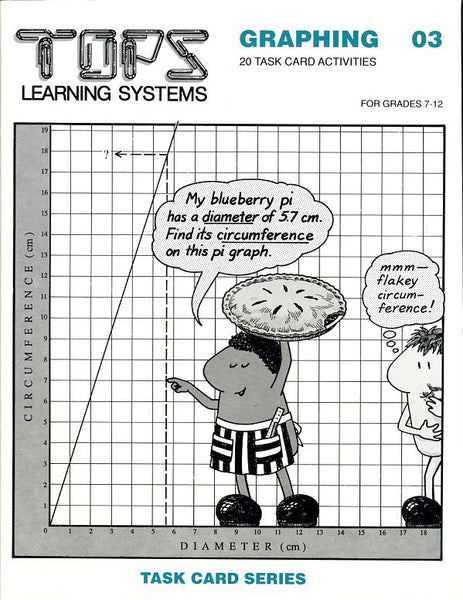#35 Metric Measuring (grades 5-9)
Regular price $23.95
Click here for a complete list of materials and convenient shopping.
Key: (1st/2nd/3rd) denote needed quantities: (1st) enough for 1 student doing all activities; (2nd) enough for 30 students working in 10 lab groups all self-paced; (3rd) enough for 30 students working in 10 lab groups, all doing the same lesson. Starred* items may be purchased below.
10/70/70: sheets of lined notebook paper, square corners preferred1/10/10: pair of scissors
* 1/2/2: boxes sugar cubes (not bricks) equivalent to 1 teaspoon
* 1/10/10: rolls of cellophane tape
* 1/1/1: box paper clips
* 1/2/2: rolls adding machine tape
1/1/1: ball kite string
1/3/10: calculators
3/30/30: index cards, 3x5 inches
1/3/10: large grocery bags
* 4/10/10: plastic soda straws
* 5/50/50: straight pins
* 1/30/30: wooden spring-action clothespins
2/35/40: soda cans with pull tabs attached
10/130/150: small styrofoam cups
10/100/250: U.S. pennies minted after 1982
2/10/20: each U.S. pennies minted before 1982, nickels, and quarters
3/12/30: U.S. dimes
1/1/1: handful uncooked long-grain rice
1/3/10: deep plastic tubs, dishwashing size
10/200/200: uniform sheets medium to heavy 8 1/2 x 11 inch paper, 20 pound bond or heavier. Scratch paper OK if one side is clean.
1/1/1: box table salt
1/1/1: box plastic sandwich bags, without zip-top
1/3/10: empty quart milk cartons
1/1/1: box granulated sugar
1/6/20: spoons
1/1/1: package corn meal
- Lesson 1: To understand the language of metric prefixes. To learn how to make metric conversions by moving the decimal point.
- Lesson 2: To construct a ruler that measures in sugar cubes. To invent a unit of measure that corresponds to meters in the metric system.
- Lesson 3: To practice measuring distances with a ruler. To express each measure in units with two different metric prefixes.
- Lesson 4: To develop a concrete understanding of area. To learn how to calculate area and express it as squared measure.
- Lesson 5: To develop a concrete understanding of volume. To learn how to calculate volume and express it as cubed measure.
- Lesson 6: To measure a box in one, two and three dimensions. To estimate quantity by measuring.
- Lesson 7: To construct an equal-arm, soda-straw balance to use in all weighing activities in this module.
- Lesson 8: To invent a unit of measure that corresponds to grams in the metric system. To learn to use the soda-straw balance.
- Lesson 9: To invent a unit of measure that corresponds to liters in the metric system. To distinguish liquid measure from dry measure.
- Lesson 10: To construct paper models of a gram, a meter and a liter based on one cubic centimeter of water.
- Lesson 11: To list the metric units in order. To express the most frequently used measures as decimal equivalents.
- Lesson 12: To express length, area and volume in units of measure that all derive from one meter. To relate dry cubic centimeters to liquid milliliters.
- Lesson 13: To develop a series of gram paper weights to use with the soda-straw balance.
- Lesson 14: To develop a lighter series of fractional gram weights that complete the paper weight series.
- Lesson 15: To use sugar cubes to show how mass changes in direct proportion to volume. To learn to draw and interpret graphs.
- Lesson 16: To calibrate a styrofoam cup in 20 mL increments. To use this calibrated cup to compare liquid measure to dry measure.
- Lesson 17: To find the density of granulated sugar. To appreciate that density remains constant -- independent of volume changes.
- Lesson 18: To find the volume of a soda straw in milliliters so it can by used as a volumetric tool.
- Lesson 19: To calculate the density of table salt and corn meal, then express each result on a graph.
- Lesson 20: To correlate the density of a substance with its floating and sinking characteristics.
We encourage improvisation - it's one of the main goals of our hands-on approach! You and your students might invent a simpler, sturdier or more accurate system; might ask a better question; might design a better extension. Hooray for ingenuity! When this occurs, we'd love to hear about it and share it with other educators.
National Science Education Standards (NRC 1996)
TEACHING Standards
These 20 activity sheets promote excellence in science teaching by these NSES criteria:
Teachers of science...
A: ...plan an inquiry-based science program. (p. 30)
B: ...guide and facilitate learning. (p. 32)
C: ...engage in ongoing assessment of their teaching and of student learning. (p. 37)
D: ...design and manage learning environments that provide students with the time, space, and resources needed for learning science. (p. 43)
CONTENT Standards
These 20 activity sheets contain fundamental content as defined by these NSES guidelines (p. 109).
• Represent a central event or phenomenon in the natural world.
• Represent a central scientific idea and organizing principle.
• Have rich explanatory power.
• Guide fruitful investigations.
• Apply to situations and contexts common to everyday experiences.
• Can be linked to meaningful learning experiences.
• Are developmentally appropriate for students at the grade level specified.
Unifying Concepts and Processes
NSES Framework: Systems, order, and organization • Evidence, models and explanation • Constancy, change, and measurement
Core Concepts/Processes: Metric logic derives from a one centimeter cube of water that occupies a volume of one milliliter and has a mass of one gram.
Science as Inquiry (content standard A)
NSES Framework: Identify questions that can be answered through scientific investigations. • Design and conduct a scientific investigation. • Use appropriate tools and techniques to gather, analyze, and interpret data. • Develop descriptions, explanations, predictions, and models using evidence. • Think critically and logically to connect evidence and explanations. • Recognize and analyze alternative explanations and predictions. • Communicate scientific procedures and explanations. • Use mathematics in all aspects of scientific inquiry.
Core Inquiries: Measure length, mass and volume in meters, grams and liters, and their common decimal derivatives. • Invent a measuring system based on sugar cubes, then derive standards of length, volume and mass.

